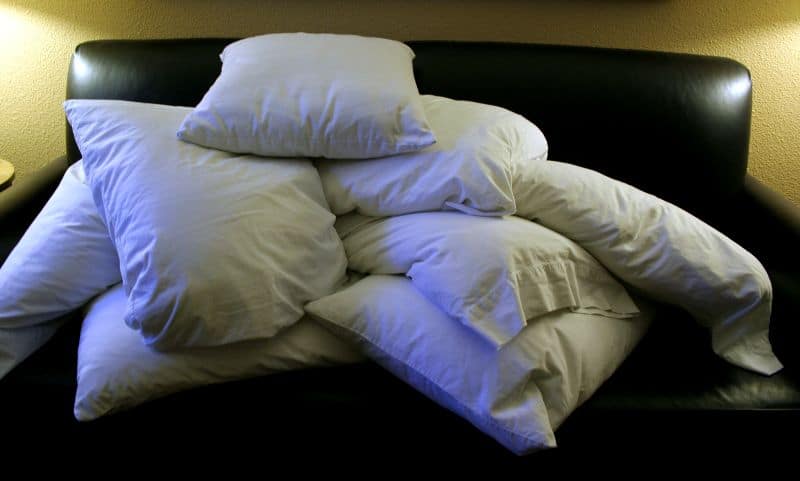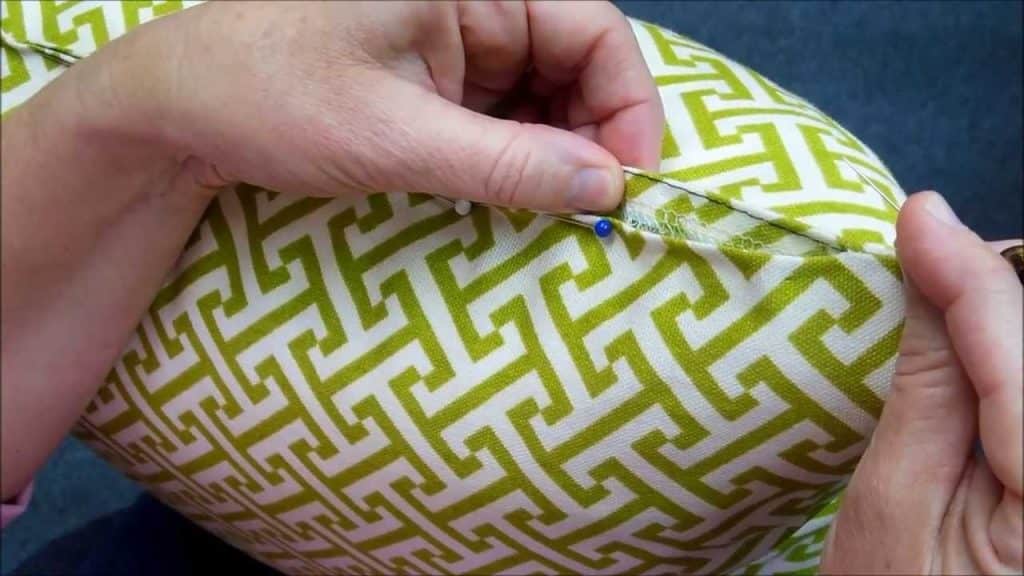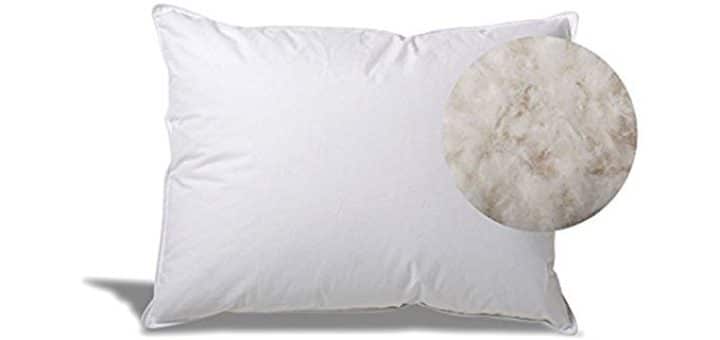Coming with a lofty and luxurious feel, feather pillows are known for their softness and inherent warmth during colder seasons. These feather pillows occasionally leak a feather or two which may poke you.
How to prevent feathers from coming out of a pillow? All you need to do is check for holes/loose stitching regularly, reinforce the seams and exercise proper maintenance by fluffing and using a pillow protector. But how do we do that?
That’s exactly what we will be answering in this blog post. We will also be sharing some tips for people that are yet to buy a feather pillow.
Dive in!
Feather Pillow Maintenance: Made Easy
| Problem | Solution |
| How to wash a feather pillow? | Avoid washing your pillow unless absolutely necessary. Place it in a washer without a detergent/fabric softener. Set wash cycle to delicate. Dry on low heat. Start another dry cycle with a bath towel in the dryer. |
| Increase pillow life | Use a pillow cover and fluff your pillow regularly. Here are 3 ways to fluff pillows. Read also: Why do pillows turn yellow? |
| Prevent feathers from leaking | Read this blog post 😀 |
How to Prevent Feathers from Coming Out of Pillow?
Here are the best hacks that will help keep all the feathers inside your pillows:
Use a Pillow Protector

Putting another cloth to cover a pillow that is already covered might seem like a waste, but it is highly effective in improving the lifespan of your pillow. Regular pillow covers lack a dense weave of cloth encasing them, making it easy for the quills to poke through.
Pillow protectors use reinforced stitching and advanced tighlty woven fabric technology to keep any feathers from coming out of the pillow. Though that doesn’t mean you are clear to play pillow fight with it, having an extra layer of protection is always good.
More significantly, pillow protectors provide a healthier sleeping environment by keeping elements like fluids, moisture, bed bugs and dust mites from permeating your pillow.
Don’t Wash your Pillow Too Often
With pillows, there is a constant inevitability of dirt, oils and dust mites getting trapped inside. In such a case, frequently washing pillows along with bedding might seem like a good idea. Who doesn’t like a pair of fresh smelling cushions?
But did you know that washing can even cause damage to your pillow? Certain pillows are marked dry clean only and should be kept away from moisture. Check out the label instructions and do not wash your pillows more than twice a year.
Read also: How to wash a memory foam pillow.
Did you know? As per a study by Johnson C.Y. Pang, rubber and spring pillows provide better neck support as opposed to feather pillows.
Look Out for Signs of Wear
Feather pillows are quite delicate, even the high-end ones. Overtime, all pillows will get lumpy and develop little signs of wear here and there. Avoid any strenuous movements or pillow fights as this could damage the down distribution inside your pillow.
Another mistake that many people make is placing a heavy object on your pillow for long hours. Unlike memory foam pillows which retain their original shape quickly, feather pillows may develop lumps. Even if you use a pillow protector, take it out and inspect your pillow every now and then so that you can tell when it is starting to leak.
The DIY Solution
When checking your pillow, gently stretch the top layer and look for any holes that might be causing the feathers to leak. Is there an area which is thinner than the others? Little holes or tears near the seam?
All this can be repaired easily with just some thread, a sewing needle and a patching cloth. If the damage is limited to a single seam, you can get away with just sewing the separated ends.

Before you start the repair, do some research on hand-sewing techniques. Here is a hand sewing technique that will help.
Pillow Fluffing
Won’t putting more feathers mean more leakage? Not necessarily! Fluffing your pillow will push the original feathers back inside and level the feather density throughout the surface. Make it a daily habit to fluff your pillow. Grab each end of a pillow and squeeze it so that all the feathers bulk up in the center. Then lay it flat on the ground and reshape your pillows correctly.
You can also fluff pillows by hitting the sides with your fists or hitting it against the bed (gently).
Before you Buy a Feather Pillow

Feather pillows come in a lot of fabric options and feather types. Evidently, certain fabrics are better than others at keeping the feathers in place and preventing leakage.
Go for a pillow whose outer cover is made up of 100% cambric cotton. This material has high strength and a super tight weave, which will keep the quills from coming out and poking you. Another consideration is to see the stitch quality.
Cheaper pillows are weakly joined together using single thread inseams. Quality pillows will have an ‘edge-type’ mentioned on the packaging. These are difficult to penetrate through as opposed to a pillow where pieces of fabric are just adjoined using a thread.
Tip: With proper maintenance, a decent quality feather pillow can last as long as 5-10 years. However, these pillows tend to compress and lose the inherent softness after 2-3 years. Thus, replacing your pillows every 24-36 months is a good idea.
Read also: Fiber pillow vs foam pillow.
When Should I Replace My Pillow?
Keeping your bedding in good shape is highly imperative for your physical and mental health. Even though you might be replacing pillow covers on a regular basis, prolonged usage leads to the accumulation of dust mites, mold, fungus, etc.
Dirty pillows can lead to skin allergies, breakouts and neck pain. Overtime, all feather pillows are bound to lose their rigidity and volume. Therefore, we recommend that you replace your pillows every 2 years. This will keep allergens at bay and also foster a better sleep quality.
When talking specifically about down/feather pillows, they should be dry cleaned and not washed often. If you do decide to wash it, make sure to use a gentle cycle with warm water and a mild detergent. Feather pillows should be washed every 3-6 months and replaced every 1-3 years.
Read also: Does a pillow make a good gift?
Parting Words
Feather pillows are a delight to sleep on, but they say good things come at a price. In this case, the price is the little extra maintenance and care these pillows need. Regularly checking for damage and covering your pillow with a pillowslip will keep all the feathers tucked inside.
Bonus: Have trouble falling asleep? Check our blog post on 14 delicious teas that will help you sleep.
